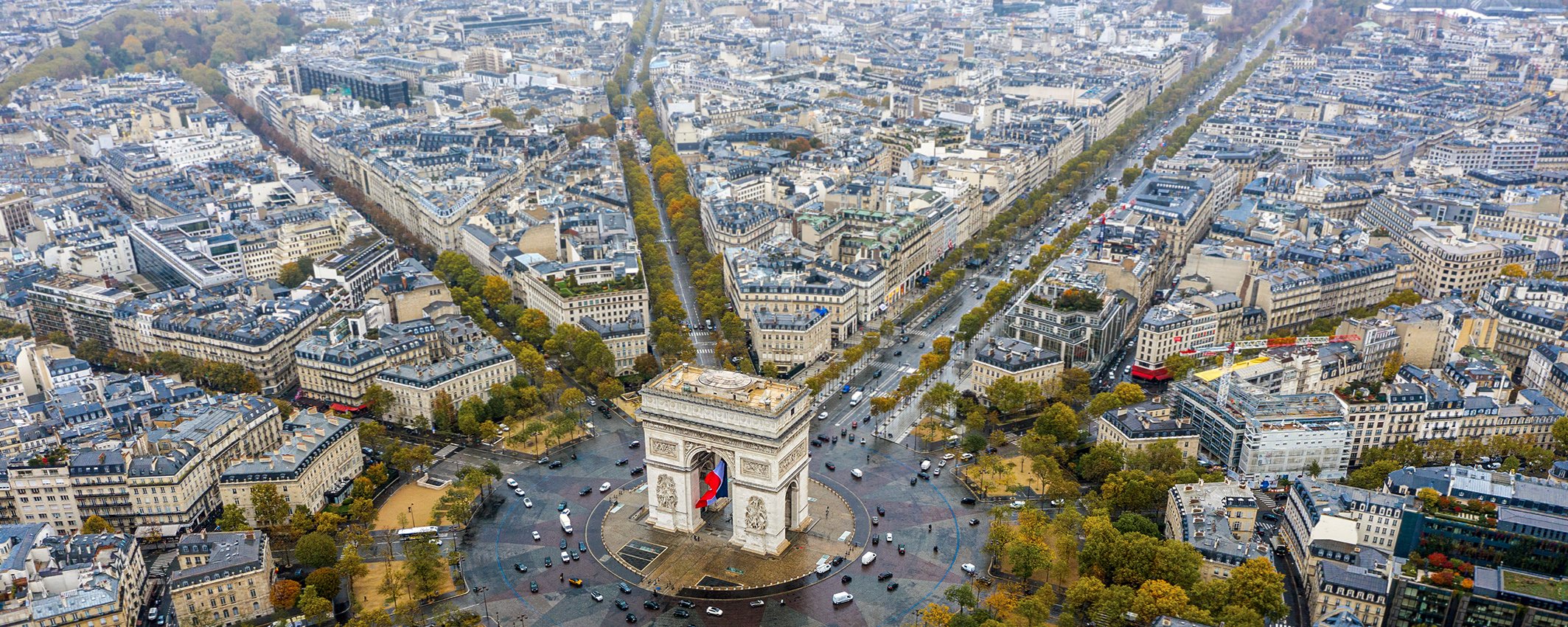 |
CCGL9070 Global IssuesThe Birth of the City and the Shaping of SocietiesThis course is under the thematic cluster(s) of:
|
Course Description
Cities are said to be our greatest inventions. As political, socio-economic, and cultural centres, they are demonstrations of human ingenuity, power, and capacity to manipulate resources and the environment. They also play crucial roles in shaping human development on both individual and collective levels, as such, defining and serving as founding sites and receptacles of our civilizations. This course guides students to explore the making and remaking of cities and their impact on the development of urban societies, from the rise of cities in the fourth millennium BC in ancient West Asia to the emergence of metropolitan cities and megacity regions in today’s world.
By exploring the making of historical, modern, and contemporary cities in different cultures, this course aims to help students develop a critical and comparative understanding of the key issues, motivations, principles, institutions, and processes involved in city-making and how urban forms, governance, and functions interact with one another, together forging visions, beliefs, values, and power that shape individual and collective identities and experiences. The course will help students develop a deeper understanding of a rich social and cultural diversity in our urban heritages and traditions and innovations over the course of our urban trajectories; learn about the rise, fall, and the regeneration of urban societies; recognize the ongoing process of city-making; and appreciate the unprecedented scale and capacity, and commensurate responsibilities of modern and contemporary urban development. We will engage creatively around ideas of sustainable urban development, basic principles of policy and planning, and questions of human flourishing.
[There will be a compulsory fieldtrip scheduled during Reading Week.]

Course Learning Outcomes
On completing the course, students will be able to:
- Demonstrate a city-scale perspective of society and an integrative and historical understanding of city-making in terms of urban form, governance, and culture and society.
- Navigate through traditions and innovations, and similarities and differences among diverse urban societies in the historical periods covered in the course.
- Demonstrate an understanding of city-making on international, regional, and local levels.
- Demonstrate skills related to creativity, communication, and teamwork in order to improve the quality of urban living for themselves and others.
Offer Semester and Day of Teaching
Second semester (Wed)
Study Load
| Activities | Number of hours |
| Lectures | 20 |
| Tutorials | 9 |
| Fieldwork / Visits | 5 |
| Reading / Self-study | 40 |
| Assessment: Essay / Report writing | 45 |
| Assessment: Group project and presentation | 10 |
| Total: | 129 |
Assessment: 100% coursework
| Assessment Tasks | Weighting |
| Participation in lectures and tutorials | 10 |
| Short essays | 20 |
| Group project and presentation | 40 |
| Research paper | 30 |
Required Reading/Viewing
- Childe, G. (1950). The Urban Revolution. The Town Planning Review, 21, 3–17.
- Clark, P. (Ed.). (2013). The Oxford Handbook of Cities in World History. Oxford: Oxford University Press. [Selected chapters]
- Lincoln, T. (2021). An Urban History of China. Cambridge: Cambridge University Press. [Selected chapters]
- Mumford, L. (1961). The City in History: Its Origins, Its Transformation, and Its Prospect. New York: Harcourt, Brace & World, Inc. [Selected chapters]
- Nightingale, C. (2022). Earthopolis: A Biography of Our Urban Planet. Cambridge: Cambridge University Press. [Selected chapters]
- Pittman, H. (2019). The First Cities. In S. Tinney & K. Sonik (Eds.), Journey to the City: A Companion to the Middle East Galleries at the Penn Museum (pp. 46–75). Philadelphia: University of Pennsylvania Museum.
- Smith, M. E. (2007). Form and Meaning in the Early Cities: A New Approach to Ancient Urban Planning. Journal of Planning History, 6, 3-47.
- Tudeau, J. (2019). Building in Assyria: A Philological Perspective. Harrasowitz Verlag. [Selected chapters]
- Woolf, G. (2020). The Life and Death of Ancient Cities: A Natural History. Oxford: Oxford University Press. [Selected chapters]
- Yoffee, N. (Ed.) (2015). Early Cities in Comparative Perspective, 4000 BCE–1200 BCE. Cambridge: Cambridge University Press. [Selected chapters]
Films to watch for the entire course
- Short films (on mega cities and the future of cities) developed by the Faculty of Architecture: https://www.arch.hku.hk/research/the-future-of-cities/
- Short films on ancient cities produced by the University of Pennsylvania Museum: https://www.penn.museum/collections/videos/video/1208
- The Fall of Civilizations Documentary Series: Fall of Civilizations – YouTube [Only the episodes related to the urban civilizations covered in this course]
Online resources
- A link introducing the Greater Bay Area of the Pearl Delt River: https://www.bayarea.gov.hk/en/about/overview.html
- A link to the Northern Metropolis Development Strategy of the Hong Kong Government: https://www.policyaddress.gov.hk/2021/eng/pdf/publications/Northern/Northern- Metropolis-Development-Strategy-Report.pdf
- The Age of Megacities: https://www.nationalgeographic.org/interactive/age-megacities/
- UN Habitat: World Cities Report 2022
- UNESCO: Culture: Urban Future; Global Report on Culture for Sustainable Urban Development
- UNESCO: Urban Heritage for Resilience: Consolidated Results of the Implementation of the 2011 Recommendation on the Historic Urban Landscape
Course Co-ordinator and Teacher(s)
| Course Co-ordinator | Contact |
| Professor S.Y. Chen School of Humanities (History), Faculty of Arts |
Tel: 3917 2427 Email: yischen@hku.hk |
| Teacher(s) | Contact |
| Professor S.Y. Chen School of Humanities (History), Faculty of Arts |
Tel: 3917 2427 Email: yischen@hku.hk |

